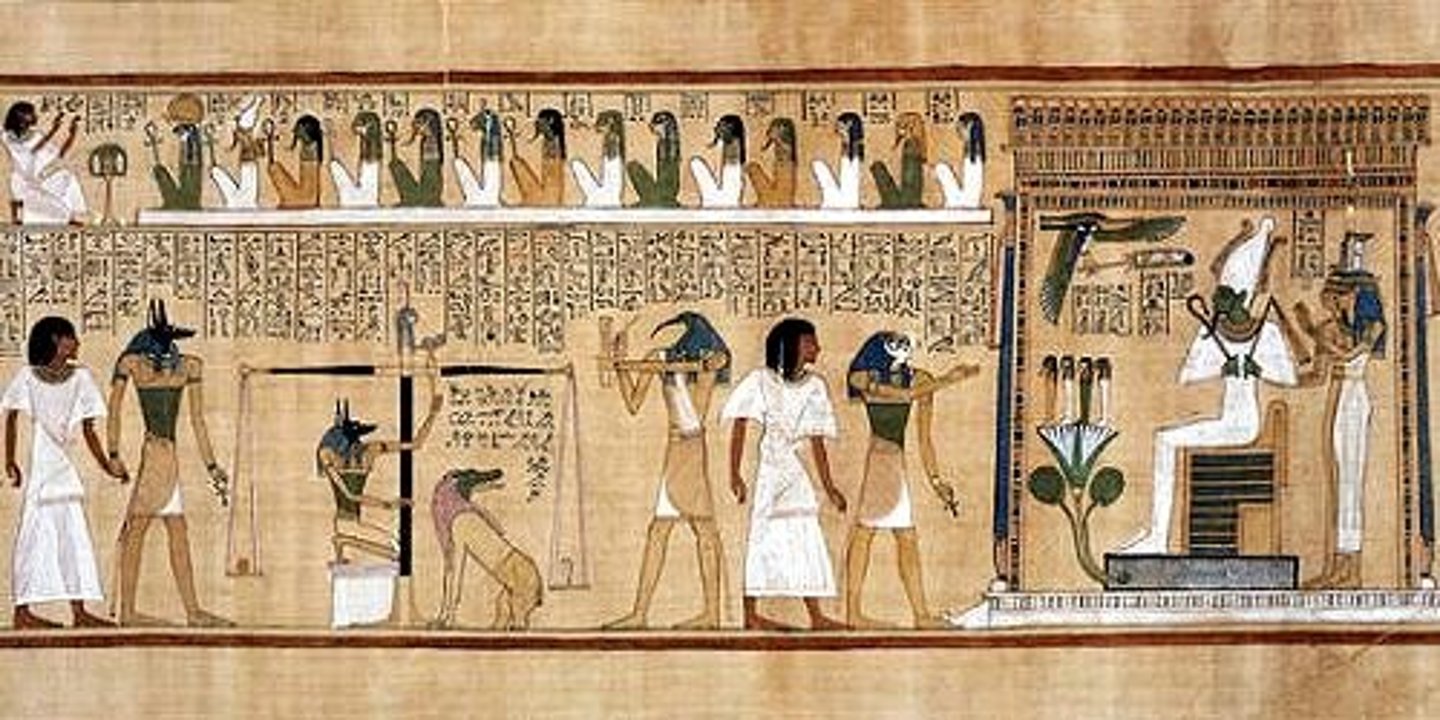Egyptian Art
1/10
There's no tags or description
Looks like no tags are added yet.
Name | Mastery | Learn | Test | Matching | Spaced |
|---|
No study sessions yet.
11 Terms
- relief sculpture depicted King Narmer uniting Upper and Lower Egypt
- hierarchy of scale
- used to prepare eye makeup (bc of blinding sun); probably commemorative/ceremonial
- believed to compress actions (that took place over many years) into one event
- narrative
- front: Narmer wears cobra crown (of Lower Egypt) and reviewing beheaded bodies of enemy (bird's eye view' heads carefully placed between legs)
- Narmer preceded by 4 standard bears an a priest; followed by food washer/sandal bearer
- center: harnessed lionesses w/ elongated necks (unification?); bottom symbol of bull knocking down city fortress (Narmer knocking over enemies)
- back: Horus as a hawk (god of Egypt) triumphs over Narmer's foes; holds rope around man's head and papyrus plant (symbols of Lower Egypt)
- Narmer w/ bull's tail (symbol of strength) at waist; bowling pin shaped crown as king of united Egypt; beating down enemy; defeated Egyptians lying beneath feet
- servant holding sandals
Palette of King Narmer
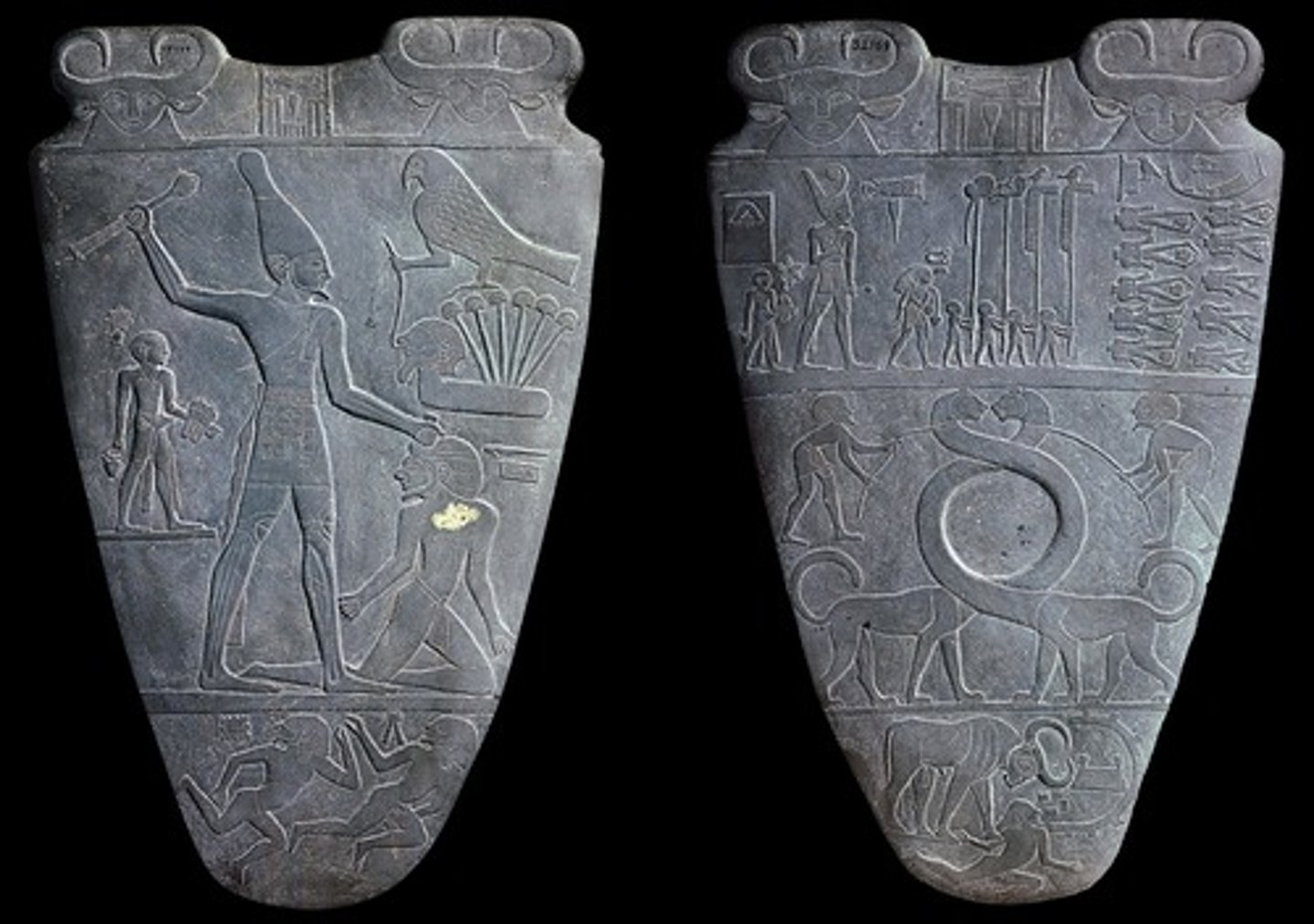
- created at tomb at Saqqara as provision for the ka
- realistic features ---> commoner
- color remains
- not specific; conventional image of a scribe
- attentive expression
- thin, angular face
- papyrus in lap; right hand once held brush, ready to write
- common motif in Egyptian art; needed for abilities
-soft body + sagging pectoral muscles = quiet and sedentary lifestyle
Seated Scribe
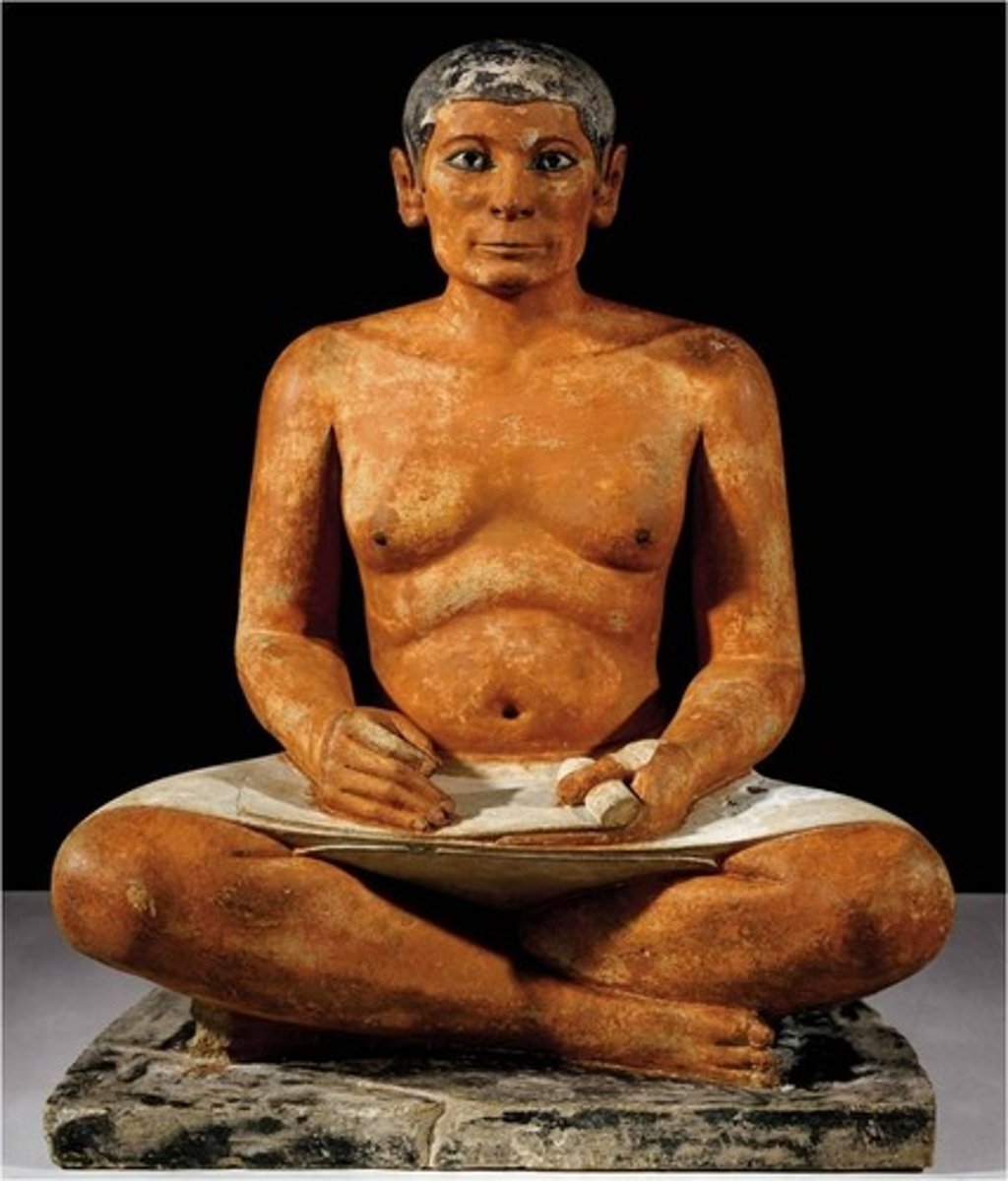
- giant monuments to dead pharaohs
- each w/ enjoining mortuary temple
- giant pile of limestone w/ minimal interior; pharaoh buried w/in
- oriented to cardinal points
- each w/ funerary temple connected by causeway
- tombs of pharaohs Menkaura, Khufu, and Khafre
Great Pyramids

- generalized features, but portrait of Khafre (pyramid behind)
- carved in situ
- body of lion; head of pharaoh and/or god
- seems to protect the pyramids
- originally painted to stand out in desert
- cats royal animals (ancient Egypt), probably because they saved grain supply from mice
- head badly mauled in Middle Ages; originally had beard (emblem of pharaohs)
- chapel between front feet
- connected to Khafre's tomb through passages
- erosion + damaging efforts to restore
Great Sphinx

- figures attached to block of stone (arms and legs)
- stare out into space
- wife's simple and affectionate gesture and/or presenting him to gods
- ankle length and tightly draped gown on queen; same height indicates equality
- original location: temple of Menkaura's pyramid complex @ Giza
King Menkaura and queen
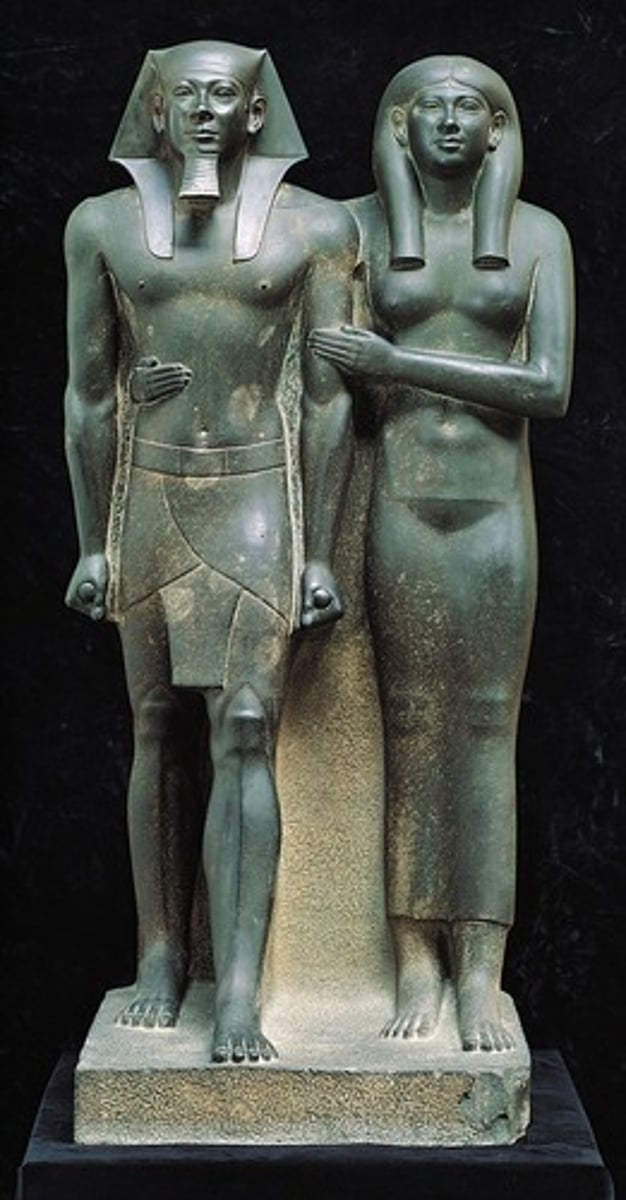
- Karnark: center of Amun-Ra's cult (main deity in New Kingdom)
- added to for 500 years after initial construction
- columns elaborately painted; carved in sunken relief
- massive lintels bind columns together
- axial plan
- tallest columns w/ papyrus capitals
- lower columns w/ bud capitals
- massive sloped plyon gateway --> peristyle courtyard --> hypostyle hall --> sanctuary (few allowed)
Temple of Amun-Re and Hypostyle Hall
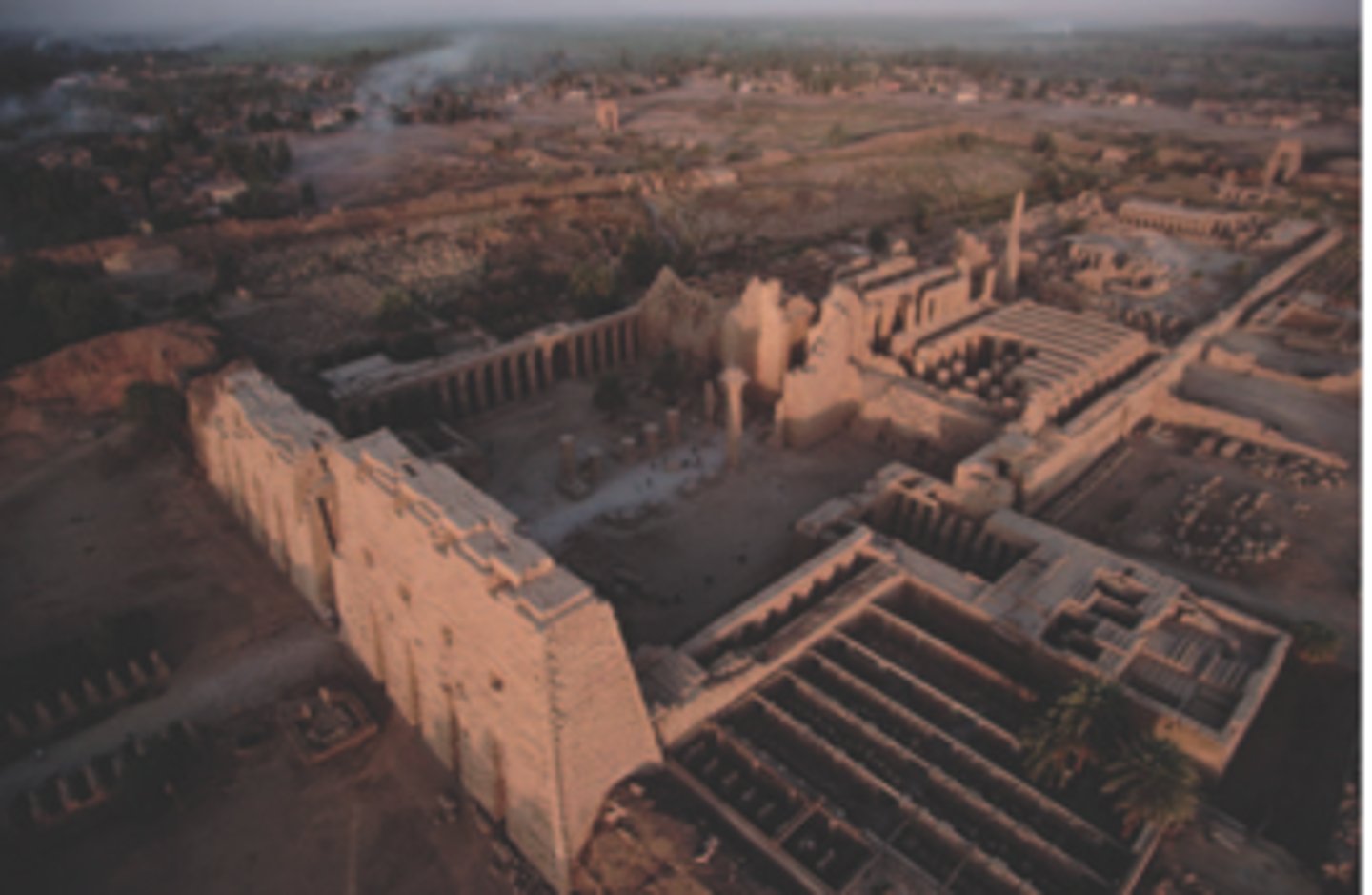
- 3 colonnaded terraces (originally planted as gardens w/ exotic trees) and 2 ramps
- visually coordinated w/ natural setting
- first time achievements of a woman are celebrated in art history
- body interred somewhere
- play homage to ka
- never intended to be tomb
- bilateral symmetry
Mortuary Temple of Hatshepsut
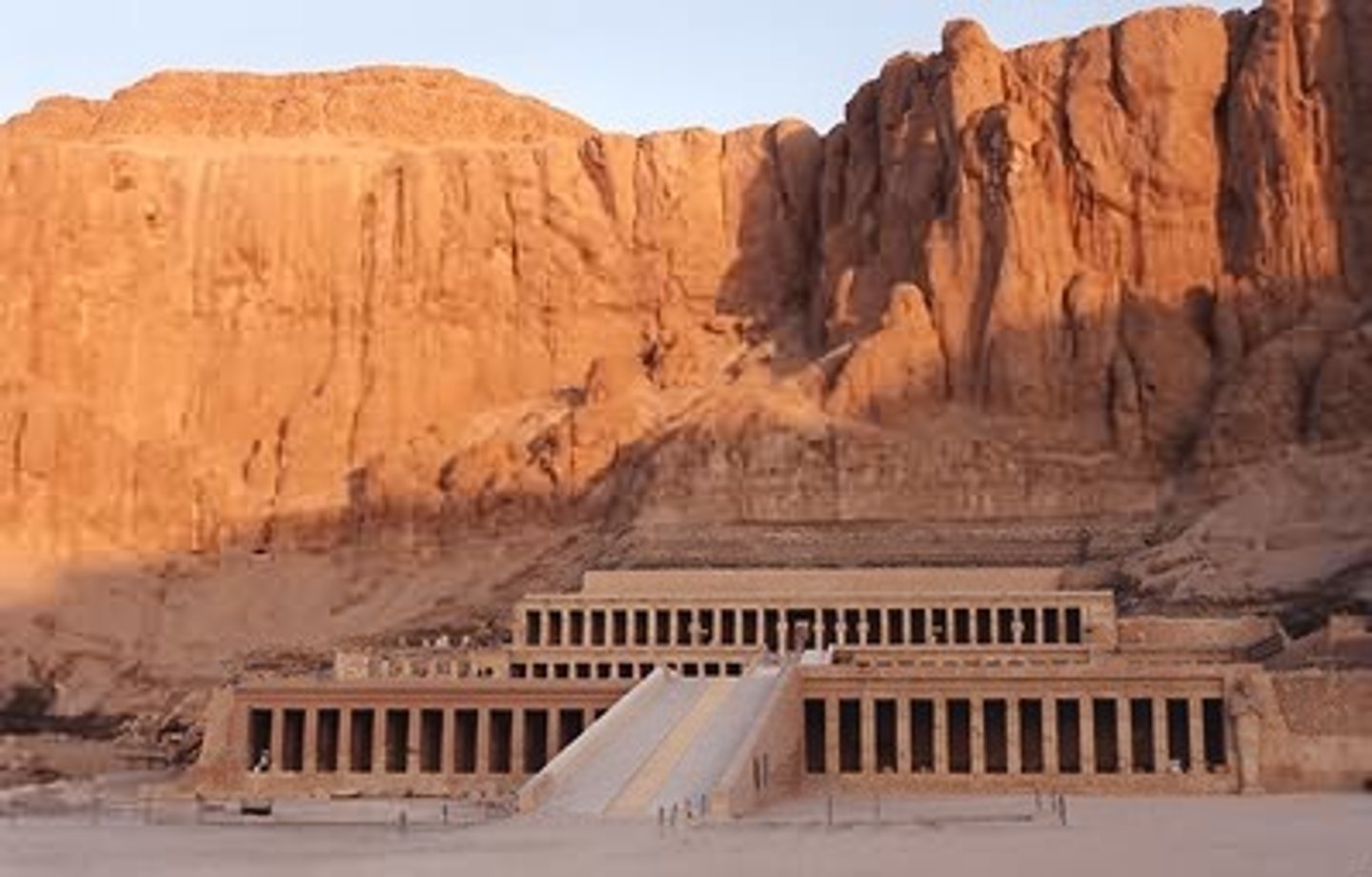
- one of 200 statues placed around temple; 1/10 of Queen Hatshepsut w/ offering jars (part of ritual to honor sun god)
- statue of sun god brought before (in a procession)
- inscription on base: offering plants to Amun
- mate costume of pharaoh; false beard, kilt
- slender proportions and slight breast indicate femininity
- white crown of Upper Egypt
Queen Hatshepsut with Offering Jars (from Mortuary Temple of Hatshepsut)
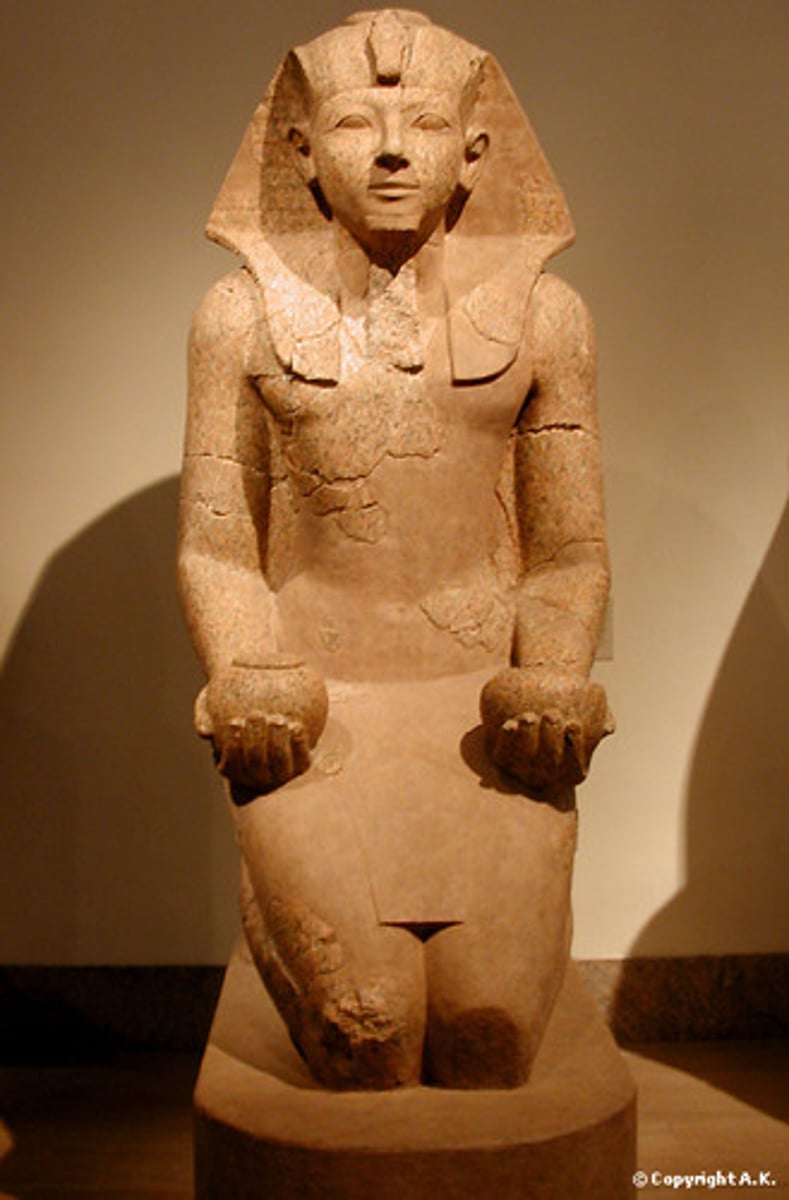
- Akhenaton holds eldest daughter (left), ready to be kissed
- Nefertiti holds daughter (right) w/ another daughter on shoulder
- @ end of sun's rays, ankhs (Egyptian symbol of life) points to king and queen
- Amarna period: smoother curved surfaces; low hanging bellies; slack jaws; thin arms; heavy-lidded eyes; awareness of space and depth; genre scene
- from altar in a home
- Akhenaton and Nefertiti having private relationship with new god, Aton
Akhenaton, Nefertiti, and Three Daughters

- famous tomb discovered by Howard Carter in 1922
- mummified body buried w/ 143 objects on head, neck, abdomen, and limbs; gold mask placed over head
- gold coffin 6'7"
- golden mask w/ smoothly idealized features of Tutankhamun; naturalism from Amarna Period in youthfulness of face
- holds crook and flail, symbols of Osiris
- perhaps physically handicapped caused by genetic inbreeding (parents were siblings)
- reigned from ages 9-19
- found in the Valley of the Kings: traditional burial ground of Egyptian kings; naturally protected by cliffs against grave robbers
Tutankhamun's tomb, innermost coffin

- illustration from the Book of the Dead (Egyptian book of spells and charms for navigating underworld; helped dead survive test and pass into paradise)
-reverts back to traditional presentations
- each rigid figure in own niche; flat
- Hu-Nefer first kneels before gods and list sins he did not commit (trying to convince he was innocent throughout his life)
- Anubis leads Hu-Nefer into hall where is soul is being weighed against a pure ostrich feather; will be condemned is feather is lighter and devoured by hybrid beast Ammit (between scales)
- believed heart housed soul of a person
- Thoth w/ head of bird writing down these events in hieroglyphics (which he invented)
- Osiris (god of underworld) final test before Hu-Nefer can enter afterlife
Last judgment of Hunefer, from his tomb (page from the Book of the Dead)
